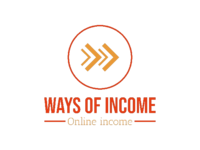To become a medical transcriptionist and work from home, you can follow these general steps:
1. Acquire the necessary skills and knowledge:
Medical transcriptionists need a solid understanding of medical terminology, anatomy, physiology, pharmacology, and medical procedures. You can gain this knowledge through formal education or specialized training programs. Look for accredited institutions or online courses that offer medical transcription training.
2. Complete a training program:
Enroll in a reputable medical transcription training program to learn the required skills. These programs typically cover topics such as medical terminology, transcription techniques, electronic health records (EHR) systems, and grammar and punctuation.
3. Obtain certification (optional):
While certification is not always mandatory, it can enhance your credibility and job prospects. Organizations such as the Association for Healthcare Documentation Integrity (AHDI) offer certification exams for medical transcriptionists.
4. Gain practical experience:
Practice your transcription skills by transcribing medical reports, dictations, or audio files. Consider volunteering or finding an entry-level position to gain hands-on experience and build your portfolio.
5. Set up a home office:
Create a designated workspace in your home where you can work comfortably and without distractions. Ensure you have a reliable computer, high-speed internet connection, quality headphones, and transcription software.
6. Invest in transcription equipment:
To perform transcription efficiently, you may need a foot pedal, which allows you to control audio playback while typing, and specialized transcription software that enables you to transcribe and format documents accurately.
7. Build a professional network:
Join professional organizations and forums related to medical transcription to connect with other transcriptionists, learn from their experiences, and stay updated on industry trends.
8. Search for job opportunities:
Look for remote medical transcription job openings on job boards, freelance platforms, healthcare facilities’ websites, or through specialized transcription service companies. Tailor your resume and cover letter to highlight your relevant skills and experience.
9. Apply and showcase your skills:
Apply for positions that match your qualifications and submit samples of your transcription work to demonstrate your accuracy, attention to detail, and understanding of medical terminology.
10. Stay updated and continue learning:
The healthcare industry evolves constantly, so it’s important to stay updated on new procedures, regulations, and technologies. Participate in professional development opportunities, attend webinars, and continue expanding your knowledge.Remember, building a successful career as a medical transcriptionist requires dedication, accuracy, and ongoing learning. Develop excellent listening and typing skills, maintain a high level of professionalism, and deliver accurate and timely transcriptions to establish a strong reputation in the field.
To become a medical transcriptionist and work from home, you can follow these general steps:
1. Acquire the necessary skills and knowledge:
Medical transcriptionists need a solid understanding of medical terminology, anatomy, physiology, pharmacology, and medical procedures. You can gain this knowledge through formal education or specialized training programs. Look for accredited institutions or online courses that offer medical transcription training.
2. Complete a training program:
Enroll in a reputable medical transcription training program to learn the required skills. These programs typically cover topics such as medical terminology, transcription techniques, electronic health records (EHR) systems, and grammar and punctuation.
3. Obtain certification (optional):
While certification is not always mandatory, it can enhance your credibility and job prospects. Organizations such as the Association for Healthcare Documentation Integrity (AHDI) offer certification exams for medical transcriptionists.
4. Gain practical experience:
Practice your transcription skills by transcribing medical reports, dictations, or audio files. Consider volunteering or finding an entry-level position to gain hands-on experience and build your portfolio.
5. Set up a home office:
Create a designated workspace in your home where you can work comfortably and without distractions. Ensure you have a reliable computer, high-speed internet connection, quality headphones, and transcription software.
6. Invest in transcription equipment:
To perform transcription efficiently, you may need a foot pedal, which allows you to control audio playback while typing, and specialized transcription software that enables you to transcribe and format documents accurately.
7. Build a professional network:
Join professional organizations and forums related to medical transcription to connect with other transcriptionists, learn from their experiences, and stay updated on industry trends.
8. Search for job opportunities:
Look for remote medical transcription job openings on job boards, freelance platforms, healthcare facilities’ websites, or through specialized transcription service companies. Tailor your resume and cover letter to highlight your relevant skills and experience.
9. Apply and showcase your skills:
Apply for positions that match your qualifications and submit samples of your transcription work to demonstrate your accuracy, attention to detail, and understanding of medical terminology.
10. Stay updated and continue learning:
The healthcare industry evolves constantly, so it’s important to stay updated on new procedures, regulations, and technologies. Participate in professional development opportunities, attend webinars, and continue expanding your knowledge.Remember, building a successful career as a medical transcriptionist requires dedication, accuracy, and ongoing learning. Develop excellent listening and typing skills, maintain a high level of professionalism, and deliver accurate and timely transcriptions to establish a strong reputation in the field.














Your article helped me a lot, is there any more related content? Thanks!
Thank you for your sharing. I am worried that I lack creative ideas. It is your article that makes me full of hope. Thank you. But, I have a question, can you help me?
As a Newbie, I am permanently searching online for articles that can benefit me. Thank you
I don’t think the title of your article matches the content lol. Just kidding, mainly because I had some doubts after reading the article.
Your point of view caught my eye and was very interesting. Thanks. I have a question for you.
Thanks for sharing. I read many of your blog posts, cool, your blog is very good.
fascinate este conteúdo. Gostei bastante. Aproveitem e vejam este site. informações, novidades e muito mais. Não deixem de acessar para descobrir mais. Obrigado a todos e até mais. 🙂
You are a very bright person!
Thank you for your sharing. I am worried that I lack creative ideas. It is your article that makes me full of hope. Thank you. But, I have a question, can you help me?
It is actually a great and helpful piece of info. I am satisfied that you shared this helpful info with us. Please keep us informed like this. Thanks for sharing.
Your article helped me a lot, is there any more related content? Thanks!
I got good info from your blog
Thanks for sharing. I read many of your blog posts, cool, your blog is very good.
Thanks for sharing. I read many of your blog posts, cool, your blog is very good.
I would like to thank you for the efforts you have put in writing this website. I am hoping the same high-grade site post from you in the upcoming as well. Actually your creative writing skills has encouraged me to get my own web site now. Really the blogging is spreading its wings fast. Your write up is a great example of it.
Thanks for sharing. I read many of your blog posts, cool, your blog is very good.
I find myself at a loss for words to describe how deeply this resonated with me. It’s not every day that a piece of writing moves beyond the surface to touch something profound and unspoken. You’ve managed to do exactly that — to reach beyond the usual layers of thought and offer something that feels real, true, and deeply meaningful.
This website is my breathing in, really good style and perfect content.
Thank you for your sharing. I am worried that I lack creative ideas. It is your article that makes me full of hope. Thank you. But, I have a question, can you help me?
Great wordpress blog here.. It’s hard to find quality writing like yours these days. I really appreciate people like you! take care
Attractive section of content. I just stumbled upon your website and in accession capital to assert that I get in fact enjoyed account your blog posts. Any way I’ll be subscribing to your augment and even I achievement you access consistently fast.
I really appreciate this post. I have been looking all over for this! Thank goodness I found it on Bing. You have made my day! Thank you again
Hello! Do you know if they make any plugins to safeguard against hackers? I’m kinda paranoid about losing everything I’ve worked hard on. Any recommendations?
I am always thought about this, thanks for posting.
I’d always want to be update on new content on this website , saved to favorites! .
I like this post, enjoyed this one regards for posting.
I view something genuinely special in this website.
What i don’t understood is actually how you’re not really much more well-liked than you may be right now. You’re so intelligent. You realize thus significantly relating to this subject, made me personally consider it from a lot of varied angles. Its like men and women aren’t fascinated unless it is one thing to accomplish with Lady gaga! Your own stuffs outstanding. Always maintain it up!
I?¦ve learn a few good stuff here. Definitely worth bookmarking for revisiting. I surprise how so much attempt you put to create one of these wonderful informative site.
I haven?¦t checked in here for some time as I thought it was getting boring, but the last few posts are good quality so I guess I?¦ll add you back to my everyday bloglist. You deserve it my friend 🙂
Thanks for another great post. Where else could anyone get that kind of info in such an ideal way of writing? I’ve a presentation next week, and I am on the look for such info.
I really treasure your piece of work, Great post.
Very interesting points you have mentioned, appreciate it for putting up.
Fantastic goods from you, man. I have understand your stuff peevious to and you’re just too
fantastic. I actually like what you hawve acquired here, really
likme what you’re aying and thee way in whih you say it.
You make it enjoyable and youu still care for to keep
itt wise. I can’t wajt to reqd much moree from you.
This is really a wonderful web site. https://glassi-info.blogspot.com/2025/08/deposits-and-withdrawals-methods-in.html
Hello, i think that i saw you visited my site thuis i came to
“return the favor”.I’m attempting too find things
to enhance my site!I suppose its ok to use some of your ideas!! https://caramellaapp.com/milanmu1/2EKcU8EoP/worst-injuries-in-nfl-history
Hey very interesting blog! https://www.Cdlcruzdasalmas.com.br/portal_de_empregos/companies/tonebet-casino/
Thank you for the auspicious writeup. It in fact was a amusement account it. Look advanced to more added agreeable from you! By the way, how could we communicate?
Rattling nice layout and wonderful content material, practically nothing else we require : D.
Thank you for your sharing. I am worried that I lack creative ideas. It is your article that makes me full of hope. Thank you. But, I have a question, can you help me?
Thank you for your sharing. I am worried that I lack creative ideas. It is your article that makes me full of hope. Thank you. But, I have a question, can you help me?
Someone essentially help to make seriously posts I would state. This is the first time I frequented your web page and thus far? I surprised with the research you made to make this particular publish amazing. Wonderful job!
Thanks for sharing. I read many of your blog posts, cool, your blog is very good.